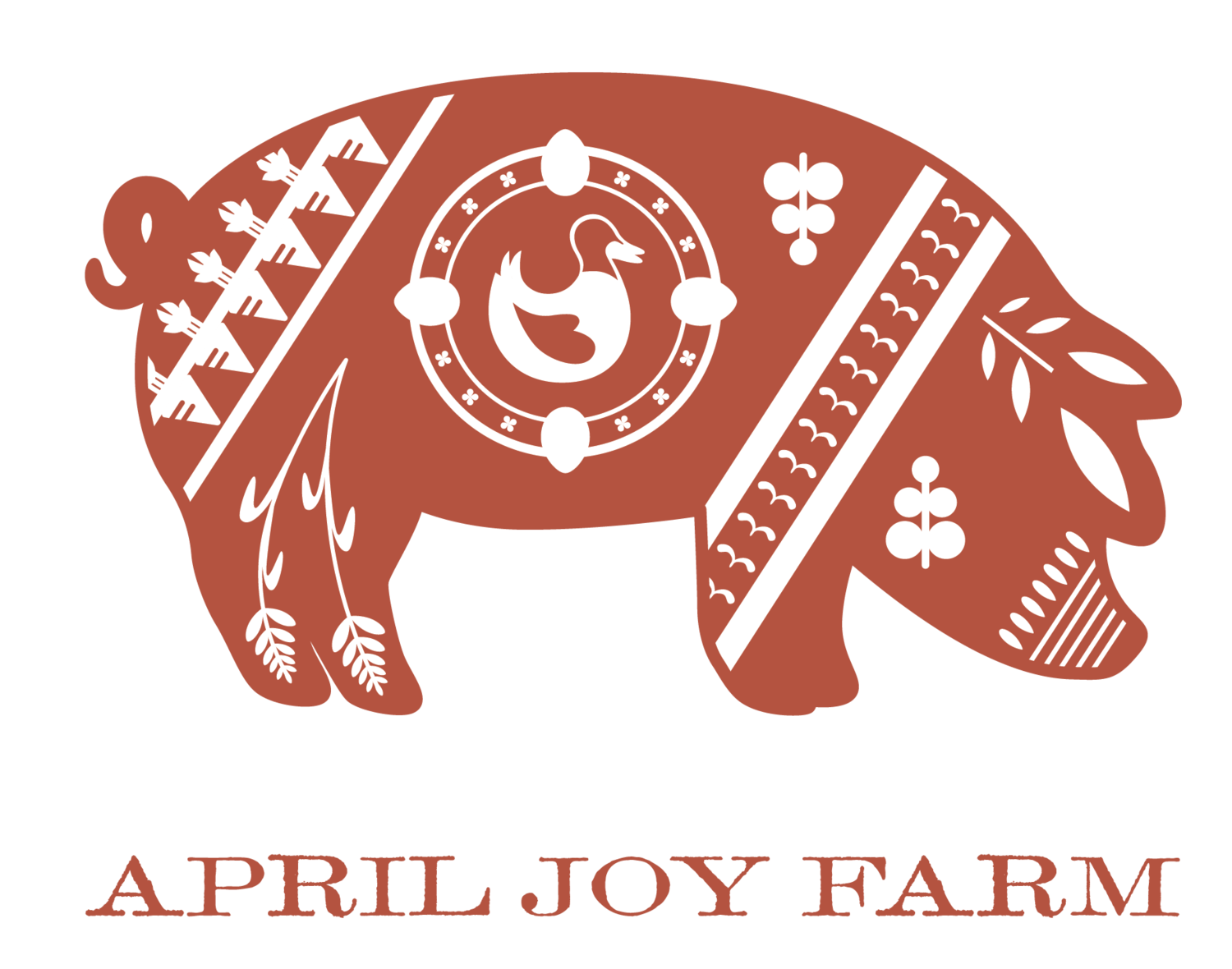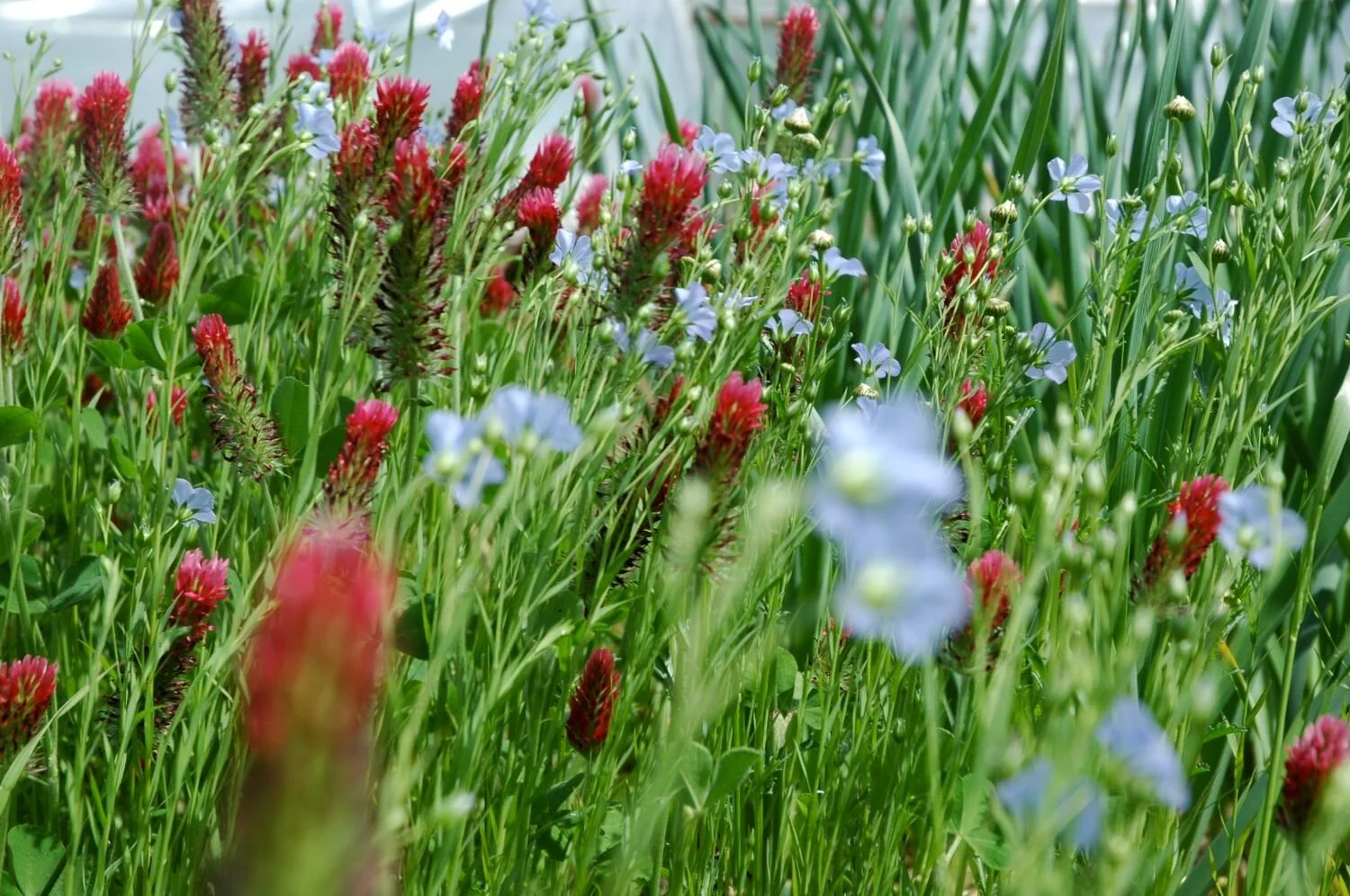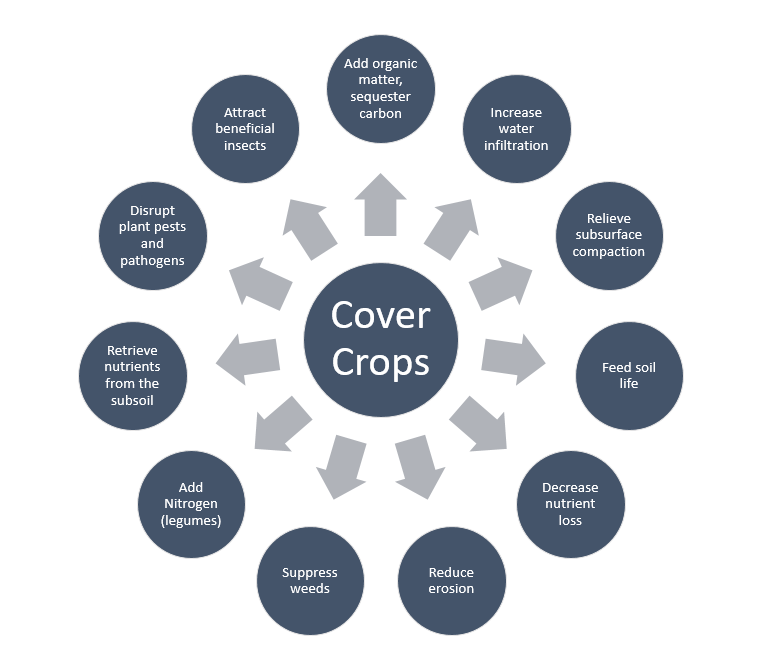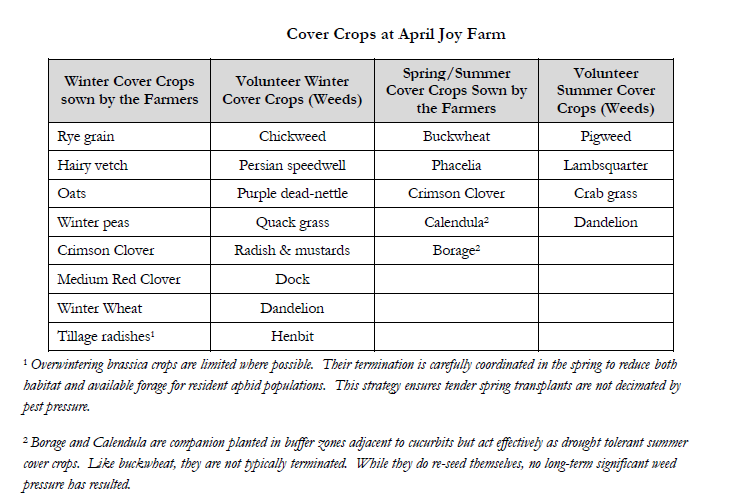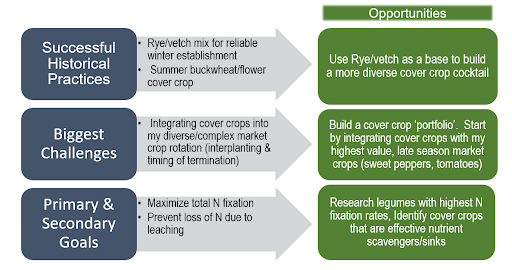3 Steps to Improving your Cover Cropping Program and Building Soil Health
Cover crops are plants grown for the purposes of improving soil health. By building healthy soil, the quality and/or yield of subsequent crops is improved.
Cover crops, also called green manures, or catch crops, can be categorized in a number of ways. They are most effective when the grower has specific goals for their use and a solid plan for how they fit into the overall rotation of the farm’s production schedule.
The beneficial services cover crops can provide farmers are incredible, from attracting beneficial insects to reducing erosion.
Other benefits include:
Adding organic matter and sequestering carbon
Increasing water infiltration
Relieving subsurface compaction
Feeding soil life
Decreasing nutrient loss
Suppressing weeds
Adding nitrogen (legumes)
Retrieving nutrients from the subsoil
Disrupting plant pests and pathogens
Three Steps to Improving your Cover Cropping Program
Cover Cropping is the second of the four elements of the Nutrient and Field Management Plan section of your SHR.
Table of Contents for the three-step process of your cover cropping program:
1. Review and Summarize Historical and Current Practices (What have you been doing?)
Before solving problems and changing your current practices, take this time to gain perspective about how you manage your farm.
Commit to this review process by writing down the basics of your past and current practices.
Reviewing your past records and writing your key thoughts down is a powerful process. This serious reflection reaps big rewards for you, your farm business and your community.
For my SHR, I crafted a few paragraphs that described the basics of my covering cropping practices including:
When and why I started cover cropping
The windows of time I used cover crops (winter sow/spring termination, spring sow/summer termination)
Tools and equipment I use to plant and terminate my cover crops
I also drafted a list, by season, of the cover crops and cover crop mixes I used. I included the volunteer plants that were commonly found in my fields at certain points in my rotation when I wasn’t able to sow a cover crop. This information could provide clues about how my soil was responding to my management practices.
Now It’s Your Turn
The questions and ideas below will help you prepare an overview of your historical cover cropping practices. There’s no one way to go about this step.
What’s important is that you capture on paper the hard-won knowledge you’ve earned as a practitioner. Write a few paragraphs that summarize your practices and describe the major elements of your cover cropping program.
Why have you used cover crops in the past?
What have you hoped to achieve through the use of cover crops?
What cover crop(s) or cover crop mixture(s) do you grow and why?
When do you typically plant and terminate your cover crops?
Prepare a simple table or list that includes all the plants you use as cover crops. Group them by the rotational niche (non-production periods into which the cover crop is grown) or time of year you sow or terminate them.
Consider including volunteer plants (weeds) that are commonly found and the point at which they occur in your rotation.
Look at an aerial map of your farm that has an outline of the fields or management units associated with your crop rotation. Sketch or draw a similar map that outlines your cover crop rotation.
Briefly describe how your market crop and your cover crop rotations are connected or interlinked. Does a certain cover crop or cover crop mix always precede or follow a certain market crop? Do you intercrop or seed cover crops directly into fields that have market crops growing in them? Highlight these relationships both spatially and temporally.
How have your cover cropping practices evolved or changed over time? What are the primary drivers of these changes?
With respect to your historical cover cropping practices, are there any other significant factors or elements that you feel are important to note?
Remember to write down the answers to these questions and summarize where you’ve been and where you are right now.
2. Identify Challenges and Opportunities (How well are your current practices working?)
After you’ve compiled a summary of what you’ve done, it’s time to outline the challenges and opportunities associated with your past cover cropping practices.
Here’s a list of questions to help you uncover any challenges that are particularly important for your situation.
Have you observed poor germination in your cover crops?
Do you have any issues related to terminating your cover crops?
Has it been challenging to incorporate cover crops into your farm system?
If so, elaborate on the specific causes. For instance, do the cover crops you plan to use not actually get planted or managed because of a lack of labor? Is weather a challenge? What about irrigation?
Have weeds, insect pests, or diseases been an issue as a result of your cover crop practices?
Have you made a lot of changes to your cover cropping practices every year or very few? What is driving those changes? Alternatively, what is working really well?
Next, review your Soil Health Assessment and System Nutrient Budget.
What are your specific soil health challenges? Identify imbalances or low functioning characteristics of your soil.
How are your cover cropping practices improving or deteriorating your soil health?
What nutrients are lacking or in excess on your farm? Are your current cover cropping practices exacerbating the retention or loss of key nutrients?
Cover cropping has many challenges. I made myself a simple worksheet so I could organize my thoughts.
Feel free to replicate this format by downloading and printing out a copy of the above worksheet (with tables you can fill in) or create your own.
However you compile the answers to your questions, be sure - yes, I’ll say it again - to write it down!
Identifying Opportunities by Taking a Closer Look at Goals
After you write down the challenges surrounding your past practices, brainstorm new opportunities. Review the summary of historical practices you’ve put together.
Of all the things you’ve tried, what has been the most successful?
List what aspects of your cover cropping program is working well.
These could be things like:
a successful pairing of a certain cover crop interplanted with a market crop.
a particular variety of legume that is readily available in your region and flourishes in your soil type and climate.
a certain piece of equipment you own that is invaluable for managing your cover crops?
We’ve found that buckwheat, phacelia, California poppies, and borage is a reliable mix that germinates and grows well in hot, dry conditions. It suppresses summer annual weeds and provides long season beneficial blooms for pollinating insects. It also breaks down quickly to leave a loose soil for planting fall crops.
Write down the best aspects of your cover cropping program.
Now, take a look at your summary of challenges and highlight those that are most critical to address.
List your top ‘pain points’ when it comes to cover cropping.
We farmers love stacking benefits, (one practice that provides multiple positive outcomes), and certainly there can be many reasons you choose to use cover crops. But sorting through possibility can easily feel overwhelming.
After you’ve dug deep into your past practices, and pinpointed your current challenges, identify just two goals, a primary and secondary, that you have for your cover crops.
Here’s an example from April Joy Farm:
Cover Crops and the Self-Land-Community Framework
It may also be useful for you to go back and look at your Self-Land-Community venn diagram that you created after reading the Self-Land-Community Framework for diverse farms blog post.
Think about your personal goals, the health of your land, and the needs of your business as they relate to your cover cropping practices. As odd as this sounds, they are more interconnected than you might think.
Here are a few questions to get you started. Focus on the ones that feel most meaningful to you.
SELF
When you think about your use of cover crops, are you proud of your practices?
What would you personally like to be doing/trying/changing?
What would you like to stop doing?
Do you enjoy the planning process and actual growing / managing of cover crops? Or are these stressful elements of your work? Regardless of how you answer, ask yourself why.
LAND
Think about your crop rotations and your cover crops.
Are these two elements of your system aligned or at cross-purposes? Can you envision ways to connect them?
To build soil health and offset the deleterious effects of market crops, what cover crops would you ideally be growing, at what times of year, and for how long (annual, biannual, or perennial)?
COMMUNITY
Think about the markets you serve and how they relate to your cover crops.
Are these two elements of your system aligned or at cross-purposes?
Are there cover crops that would add value to your operation and serve a market need? For instance, did you know alfalfa is an excellent legume for nitrogen fixation, a high value forage crop, and a medicinal herb?
When you’re thinking through the challenges and opportunities, it can be tempting to skip ahead and try to come up with solutions at the same time.
Resist that urge.
At this step, you’re simply getting clear about what is and isn’t working and about your underlying motivations and true goals.
Don’t disregard possible ideas because you can’t yet see any feasible way to implement a solution or “fix” a challenge.
Here’s the cover cropping summary for April Joy Farm
3. Create a List of Recommendations
Given the historical perspective, challenges and opportunities you’ve outlined, what improvements to your cover crop practices are you interested in making?
In the diagram below, I demonstrate the process I use to plan and implement cover crops at my farm, starting with my key goals.
Remember, at this point, focus on the primary and secondary goals you identified in the previous step.
Click the image to view a PDF copy for easier reading.
Although the image is of a circular diagram, in practice I think of it more like a spiral. I’m working through the same key questions each year, but I’m not passing through the same exact spot because I’ve learned something from the previous year. I leverage that knowledge to be closer to my idea of success.
For a more in depth discussion on this process, check out my Washington State University Cover Cropping Roundtable presentation. (My presentation starts at 1:35 hrs into the webinar.)
Now it’s your turn.
Take a look at your challenges and opportunities summary. Start with your primary and secondary goals. As you work step-by-step through these five elements, do research to help answer the questions associated with that step.
Practical research will help you develop a robust and creative list of recommendations.
Keep a spiral notebook or electronic notepad near at hand.
Record any recommendations or ideas that strike you as worthwhile and applicable to your operation.
Commit your thoughts to paper, because this is your recommendations list.
Here are a few key resources to help you develop your recommendations:
The chart on page 6 is particularly helpful. It identifies specific cover cropping goals and how those goals translate into cover cropping characteristics. The chart suggests particular plants to help achieve those specific goals
Cover Crops and Soil Health, USDA National Resource Conservation Service (NRCS) website
Building Soils for Better Crops, Magdoff and Van Es, (See Chapter 10). Available online at the Sustainable Agriculture Research and Education (SARE) website.
Regional Cover Crop Councils:
Deciding what changes to implement. When and How?
Wait! Don’t decide on changes just yet.
It may feel counter-intuitive, but at this stage of creating your Soil Health Roadmap (SHR), it’s important that you don’t decide on which recommendations you’ll implement.
After you’ve assembled a list of potential recommendations, set it aside and move onto the other aspects of your Nutrient and Field Management Plan.
Once you’ve developed lists of suggested management changes for Rotations, Organic Materials, and Machinery/Equipment, you’ll revisit your potential recommendations for Cover Crops and evaluate each one in light of all four aspects of your Nutrient and Field Management Plan.
